howe to draw a 3d b
3D Cube Drawing Guide for Beginners
In this art tutorial you'll larn how to draw a 3D cube (freehand) using two signal perspective concepts. I won't be teaching you technical techniques using a ruler. Instead I want to show you how to draw a 3D box without using a ruler and vanishing points. The skills you will larn here would be best utilized for sketching, drawing cartoons, or comic style art.
If y'all desire a more technical drawing lesson, become to The Basics of One Betoken Perspective.
You'll acquire some basic concepts when it comes to drawing 3 dimensional cubes. There are some common mistakes people brand that are hands corrected. All you need is some basic knowledge to be able to identify and fix these mistakes.
With the techniques yous will exist learning in this drawing tutorial, you lot'll be able to describe just about anything that takes on the bones shape of a cube. I didn't realize how many objects there are that are cubes until I starting putting this lesson together. They are everywhere!
Cube Drawing Vocabulary
Shape – a two-dimensional element created from line, and can be positive or negative.
Form – is created when depth is added to a ii-dimensional shape making it three-dimensional.
Parallel Lines – 2 lines that are always the same distance apart but never impact.
Light Source – the direction in which the source of light is coming from. The light source tells you where all of your low-cal values and shadows.
Shading – used in drawing to show a range of lighter to darker values. This helps to create the illusion of depth.
Value – Lightness or darkness of colors and tones that range from white to black.
Shadow – a nighttime expanse where the light from a light source is blocked by a solid object. This shadow is what we typically see no the object itself.
Cast Shadow – a shadow that is create by an object blocking light that is cast on the basis or some other surface.
Shape Vs. Form
So technically, a cube is a course not a shape. And by definition, is 3-dimensional. Both shape and class are i of The 7 Elements of Art. The divergence between shape and form is that a shape is 2-dimensional, and a form is 3-dimensional.
And since drawing anything in 3D is way cooler looking than with 2D, most of our lessons focus on cartoon objects in 3D.
Since we take the technical stuff out of the way, let's get started.
Don't Draw Cubes Like This
I'd like to start past proverb this… If you are currently drawing your 3D cubes using the overlapping square method. Delight end! It drives me nuts when I meet this.
Information technology's nothing brusk of a parlor fox and doesn't teach you annihilation. Furthermore, it's almost impossible to use this method to any everyday object. My goal is to teach y'all the needed skills for you to be able to look at any (cube shaped) object and draw information technology.
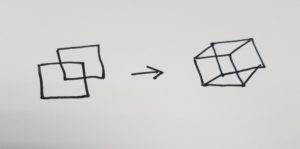
Allow's get started on something a fleck more practical to use in your drawings.
* Some of the links in this post may be affiliate links. This means I receive small commissions for purchases fabricated through these links at no actress cost to you lot.
Art Supplies
- Col-erase pencil (red)
- Mechanical or regular pencil
- Pinkish Pearl Eraser
Acquire to Draw in Only 5 Minutes a Day
How to Depict a Cube – Stride by Step
I settled on this method after struggling to get my students to sympathise the concepts involved in cartoon 3D shapes. Even the older ones struggled to describe a 3D cube correctly. Afterwards trying several different techniques, this is what I came upwards with that fabricated the almost sense to them.
Pace 1 – Start by Cartoon the Corner Nearest to Yous
There are a couple of means to begin drawing your cube. How you showtime will depend on the angle you volition be viewing your object. If you are looking at your object from a direct on view, yous would apply a 1-point perspective concept. I won't be showing you that here though.
I find the ¾ view to be the most interesting nearly of the time. For the purpose of this tutorial, I'll be focusing on the ¾ view. This will crave you to follow the 2-betoken perspective concepts.
Begin by drawing the corner of the cube that is nearest to you. It should look something like this.

Pace 2 – Describe the Bottom Edges
For the bottom edges of the cube, draw two lines forming a slight "V" shape. The length of these lines will determine the overall shape of your cube. If you want your final cartoon to wait like an fifty-fifty cube, continue these lines roughly the aforementioned length.
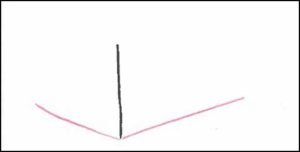
Footstep 3 – Depict the Top Edges
Next, draw the lines for the upper edge of your cube that are cupboard to you. These should as well form a slight "V" shape. It's very important that these lines are parallel to the corresponding lines on the bottom of the cube. The summit and lesser lines to the left of your corner must be parallel to each other. As well as the top and bottom lines to the right of your corner being parallel to each other.
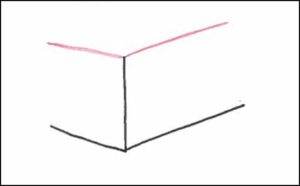
Step 4 – Draw the Sides
At present y'all want to connect these lines with ii vertical lines. Both of these lines need to be parallel with your initial corner line. If these 3 lines are not parallel with each other, your cube will start looking funky.
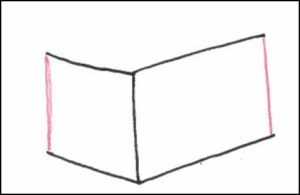
Step five – Draw the Edges Furthest from Yous
Add in the edge of the cube that is furthest away from yous. Again, keep these lines parallel with their counterparts across from them. If you await at the epitome beneath, you desire to keep the shorter lines parallel with each other. As well as the longer lines parallel with each other.
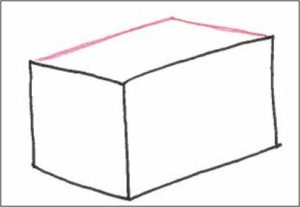
Step 6 – Adding Depth to a 3D Box
The last thing y'all need to practise is add in the far corner to the within of your cube. This line should also be parallel with the other three vertical lines.
Here is what my completed cube looks like.

You lot can also take this a step further and add some thickness to your cube by adding some additional lines to your cartoon. Once again, just keep your lines parallel.

How to Shade a Cube
An of import part of drawing, is learning how to shade. First, draw your 3D box or cube and decide on your low-cal source. For this case, our light source is going to be coming from the upper left.

This will create the darkest shadow on the reverse side of the cube. The source of light volition be completely blocked on the far side of the cube.
I detect information technology easier to commencement with the darkest area first.
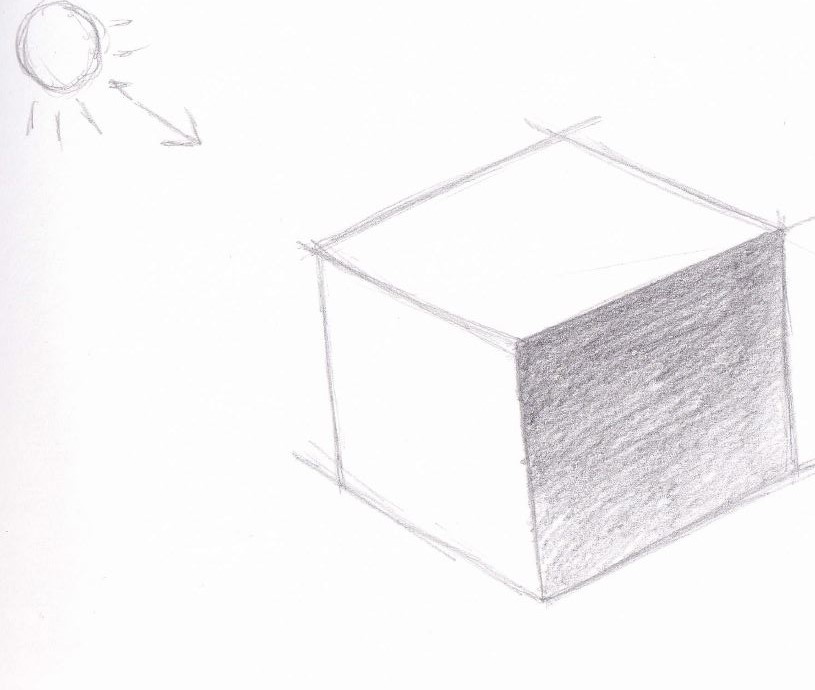
Nosotros're going to work from darkest to lightest, and so our middle value will exist next. This lite source on this side of the cube volition be partially blocked.
Take a look at Creating a Value Calibration if you need help achieving different values.
The exact location of the light source will decide where the light reflects off the surface of your cube. For the purpose of learning how to shade a cube, you tin can just choose a spot on this side to leave a light spot.

The lightest side will exist the pinnacle of the box because there isn't anything blocking the lite. It looks ameliorate if you add together a lite shadow nearest the light, and then fade that into white. Yous can go out it completely white if you want too.

The last step is to add a cast shadow on the far side of your 3D cube cartoon. This should exist every bit nighttime, or darker than the side of your cube.
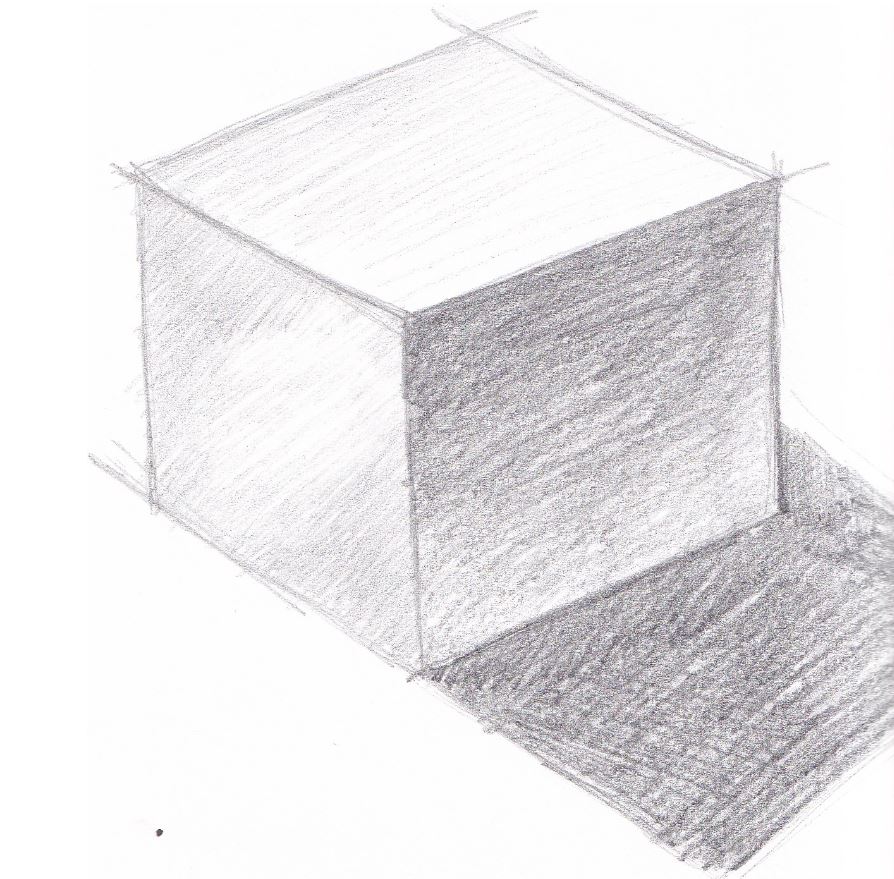
When learning how to draw a cube, shading is near as important as the bodily drawing. Don't feel like everything you do has to exist perfect though. Learn and understand the basic concepts, and improve over time with practice.
How to Draw a 3D Box from Real Life
As I was walking effectually work today I was looking for something interesting to depict that had a basic shape of a cube. There were then many options to choose from.
I settled on this crate that I came across. I thought it would be fun to describe, so here we go. As mentioned in my earlier post, Anyone Tin Learn to Depict, the first thing you have to do is larn to "See". You should begin past taking annotation of the angle at the bottom of the crate as you outset to layout your sketch.
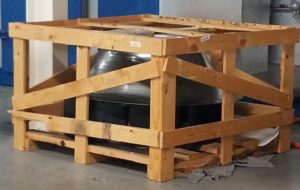
This was my initial sketch that I did. However, later looking at it, I realized one of the boards wasn't quite right. The angle of the center board on the height is off just slightly, which makes a pretty large difference. If you wanted your boards to expect uneven, then this would work just fine.
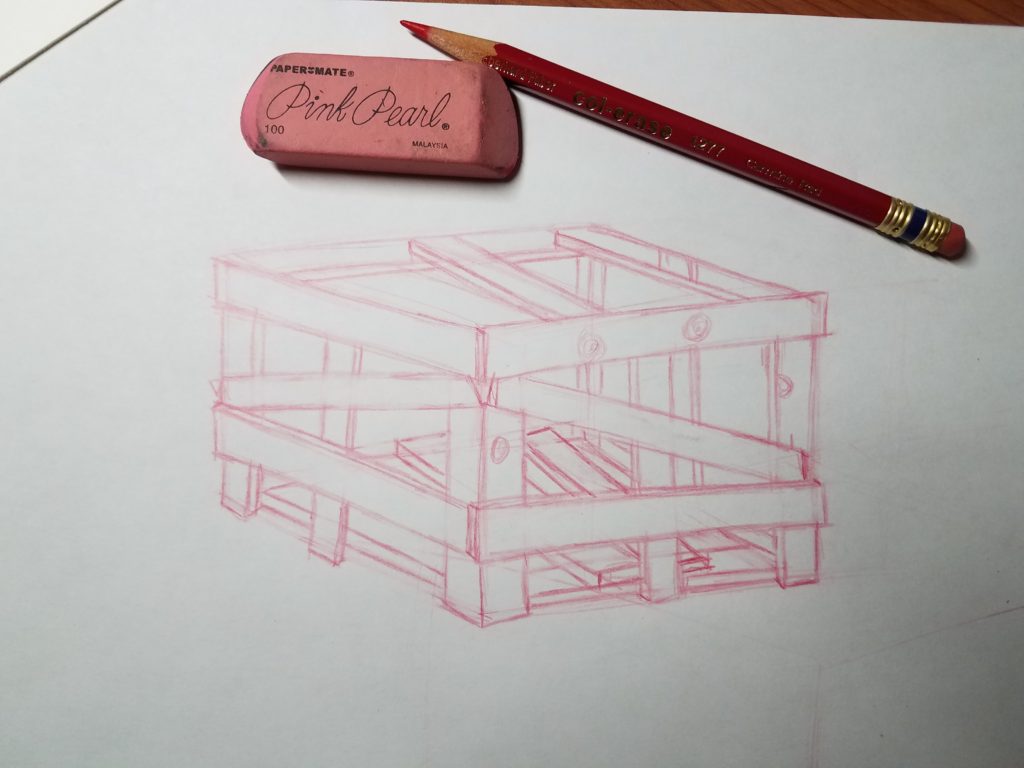
I re-drew the elevation board so it was parallel with the boards next to it. This was my final sketch. The board I fixed is fatigued with a regular pencil. I also cleaned up the bottom boards likewise.

I'll leave you with this challenge. How many different objects can you draw from a cube? I would love to run into what you come up upward with. Please stop dorsum and share your results.
Here is my do folio. I walked effectually the business firm and quickly sketched anything that was cube shaped. The more you lot practice, the improve yous will be able to "See" what y'all are cartoon. This is a quick exercise that you would benefit from doing often.
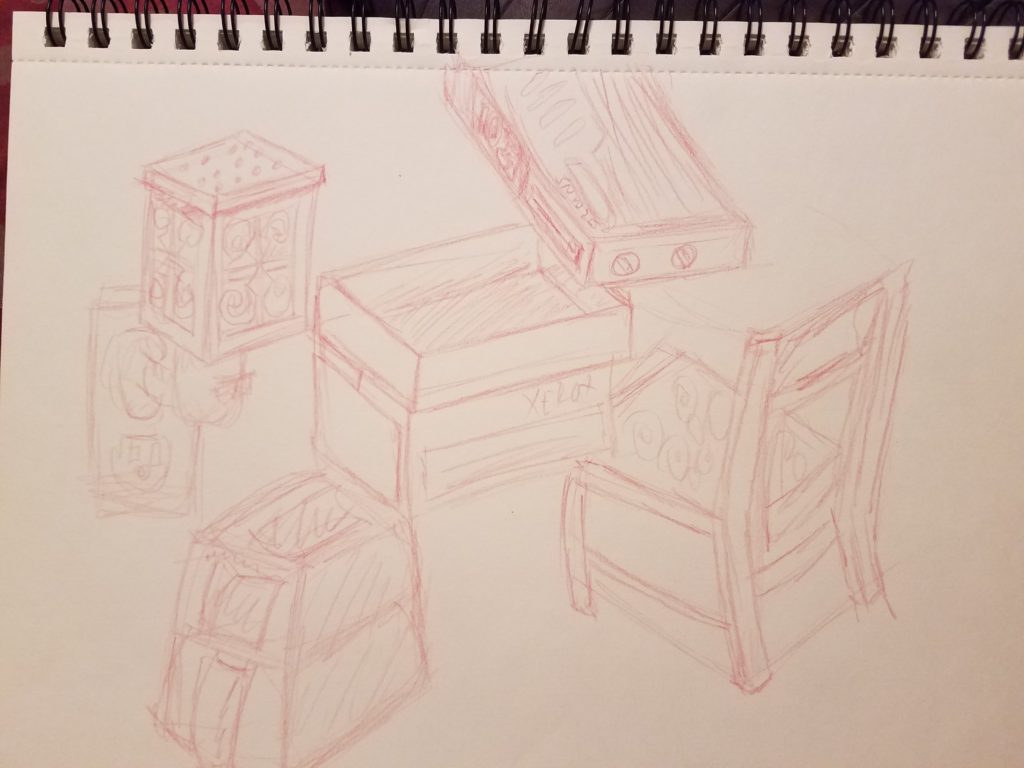
How to Draw a 3D Cube in 6 Easy Steps
Learning to depict a cube will assistance yous in many other areas of creating art. The more you practice, the better you volition go. So keep practicing and be sure to have fun.
Grab Your Free Guide to Amend Art in Only 5 Minutes a Day
Posts Related to Drawing Cubes
- How to Draw a 3D Book – Easy
- Robot Forms Art Project
- How to Describe Cylinders
- Elements of Art
- Learn to Draw 3D Money

Roshanda is an art instruction blogger who is on a mission to charabanc and encourage as many aspiring artists as possible through the utilize of her blog. Learn more about her on the About Me page and connect with her on Facebook, Twitter, and Instagram.
crumrineearelleth.blogspot.com
Source: https://artbyro.com/draw-a-3d-cube/
0 Response to "howe to draw a 3d b"
Post a Comment